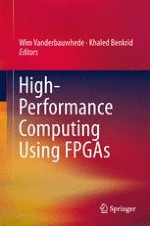2013 | OriginalPaper | Buchkapitel
High-Performance Computing Based on High-Speed Dynamic Reconfiguration
verfasst von : Minoru Watanabe
Erschienen in: High-Performance Computing Using FPGAs
Verlag: Springer New York
Aktivieren Sie unsere intelligente Suche, um passende Fachinhalte oder Patente zu finden.
Wählen Sie Textabschnitte aus um mit Künstlicher Intelligenz passenden Patente zu finden. powered by
Markieren Sie Textabschnitte, um KI-gestützt weitere passende Inhalte zu finden. powered by
